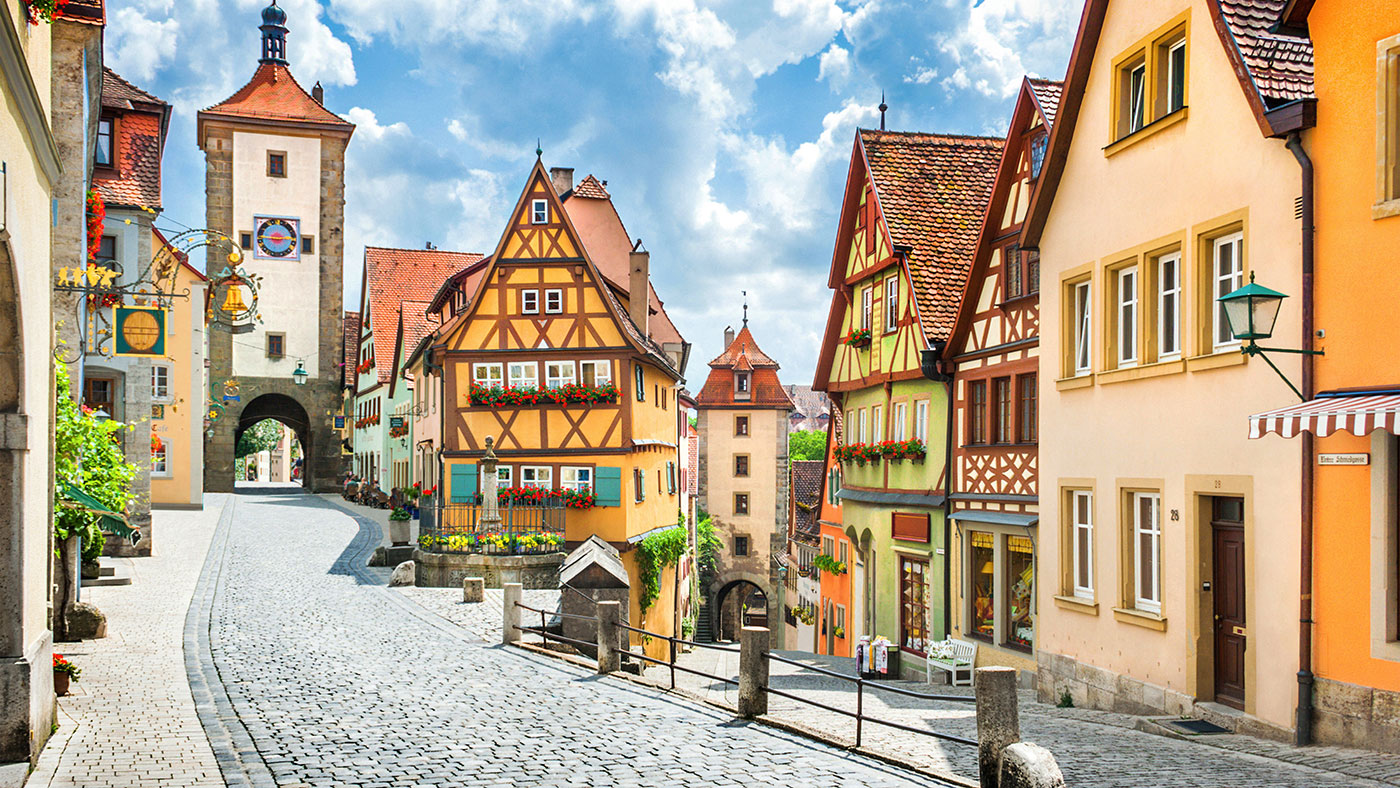Three of Europe’s prettiest villages


My love of villages fuelled my love of travel, says Raphael Kadushin in National Geographic Traveller. “I would swap names of favourite, off-the-grid, under-the-radar hamlets with other intrepid travellers, and we each nursed our own lists of pastoral pit stops.” The first on the list was the Bavarian village of Rothenburg ob der Tauber.
This cobbled huddle of half-timbered houses, deeply pitched red-tiled roofs, blooming flower boxes and jutting towers resembles a medieval stage set. Nineteenth-century painters considered the village the epitome of German Romanticism, a tradition upheld by their 21st-century Instagram-snapping successors, posing by the fountains. “Even Walt Disney called the village a muse, casting Rothenburg as the model for his village-scape in Pinocchio.” It retains a soulful Bavarian culture that has all but vanished elsewhere.
The Week
Escape your echo chamber. Get the facts behind the news, plus analysis from multiple perspectives.

Sign up for The Week's Free Newsletters
From our morning news briefing to a weekly Good News Newsletter, get the best of The Week delivered directly to your inbox.
From our morning news briefing to a weekly Good News Newsletter, get the best of The Week delivered directly to your inbox.

Gordon Bennett’s old haunt
“Midway between Nice and Monaco, in a curve protected by tall, grey slabs of the rocky foothills that hug the shoreline, Beaulieu-sur-Mer was once a tiny fishing port surrounded by terraced olive groves and flower farms producing violets and carnations,” says Lanie Goodman in Condé Nast Traveller. Below the cliffs is a palm-fringed strip of beach known as La Petite Afrique, because it has its own warm microclimate. It is here that Dick and Nicole Diver stop to skinny-dip in F Scott Fitzgerald’s Tender is the Night.
It was also here that the wacky American founder of the Paris Herald, James Gordon Bennett, lived in the 1880s. His yacht, the Lysistrata, had its own Turkish bath, resident cow and a prow with luminescent owl eyes. Needless to say, it caused quite a stir. If you’ve ever wondered why his name is still used as an expletive, you can blame it on his antics at Beaulieu. For decades afterwards, Beaulieu continued to attract the great and the good. In the 1960s Gregory Peck, Charlie Chaplin and David Niven all had homes nearby.

An unspoilt St Tropez
A free daily email with the biggest news stories of the day – and the best features from TheWeek.com
It’s easy to be seduced by the relaxed vibe in Comporta, the antithesis of the Algarve, says Sarah Gilbert in The Independent. Located at the base of the Troia Peninsula, sandwiched between the Atlantic and the river Sado estuary in Alentejo, Portugal’s rural heartland, Comporta becomes an under-the-radar celebrity haunt each summer. You might bump into Madonna, shoe guru Christian Louboutin or designer Philippe Starck. The abundant natural beauty acts as a lure. The 12km of sand is “so pristine it’s hard to believe you’re in Europe”.
Late afternoon is perfect for exploring Comporta village, where the unassuming narrow streets are lined with whitewashed buildings topped with terracotta-tiled rooftops or traditional thatch, home to stylish boutiques. “People come to Comporta because it reminds them of St Tropez or Ibiza before the crowds arrived,” Isabel de Carvalho, the owner of Comporta’s oldest restaurant, the Museu do Arroz, tells Gilbert. “But really, there’s nowhere else like it.”

The charming villages of London
Londoners love to tell you their city is made up of a series of villages, says Natasha Foges in Britain magazine. These days, this can be hard to believe, but pockets of tranquillity can still be found in the charming villages that have been absorbed in the urban sprawl. Dulwich, in the southeast of the capital, is one of London’s oldest villages. First recorded in 967 as Dilwihs, its name is said to mean “the meadow where dill grows”.
True to its name, the area’s leafy lushness is its main draw, from the expansive Dulwich Park, where highwaymen would prey on the nobility, to Dulwich Wood, where Charles I hunted deer. Then there’s Dulwich College, built in 1866 by Charles Barry Junior in the Italian Renaissance style. Today it’s an exclusive independent school, and its surrounds are carpeted with playing fields.
This article was originally published in MoneyWeek
-
 The week’s best photos
The week’s best photosIn Pictures A new year dawns, a volcano yawns, and more
-
 8 incredible destinations to visit in 2026
8 incredible destinations to visit in 2026The Week Recommends Now is the time to explore Botswana, Mongolia and Sardinia
-
 Wave of cancellations prompt Kennedy Center turmoil
Wave of cancellations prompt Kennedy Center turmoilIN THE SPOTLIGHT Accusations and allegations fly as artists begin backing off their regularly scheduled appearances